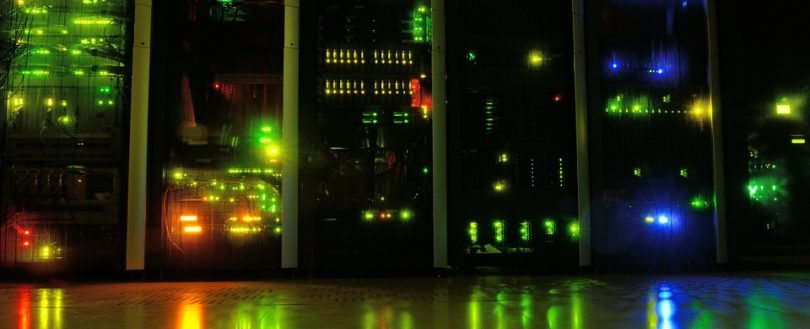- Homepage
- News
- Blogs & Articles
- FIA Publishes new Guidance Document: Pipework for Gaseous Fixed Fire Fighting Systems

FIA Publishes new Guidance Document: Pipework for Gaseous Fixed Fire Fighting Systems
Like it? Share it!
16 August 2017 by Guest Blogger,
It has taken six months and significant input from a range of experts, but now the Fire Industry Association has published a new guidance document designed to demystify the standards surrounding the design, selection and installation of gaseous fixed fire fighting system pipework.
For those that don’t know, a fixed gaseous fire fighting system is a system that does pretty much what it says on the tin – it uses a gas based agent to put out a fire either by displacing some of the oxygen in the room to suffocate the fire, or by removing heat. The method is dependent on the type of agent used.
A system like this is commonly used in facilities such as data centres, where delicate and high-risk computer equipment could suffer damage from other extinguishing media, such as water, foam or powder. The design ensures that the gas system extinguishes the fire quickly and cleanly, without damaging the equipment.
After all, in a space such as a data centre, the loss of that data would come at a tremendous cost to a business – and the knock-on effect to other systems and businesses that rely on that data further down the line would be hugely detrimental. Not to mention the actual physical cost of losing the hardware itself and having to replace it. Therefore, protection of that facility from fire is imperative to reduce that risk of business interruption.
In almost all gaseous fire fighting installations, the agent is delivered to the protected hazard through a network of pipework. Installing the pipework presents a number of challenges and ensuring that the pipework is correctly designed and specified is important to avoid issues that could affect the safety and effectiveness of the system. Mismatching pipe threads, improper seals between pipework carrying the gas, corrosion, and using pipes of the wrong size or wall thickness could lead to issues to the overall detriment of the system. The key thing is knowing what problems there could be and knowing how to avoid those common pitfalls.

FIA stock image: Alan Elder presenting in 2011
Alan Elder, Chairman of the FIA’s Working Group Gases, explained: “The supply of gaseous fire fighting systems requires a number of skills, experience and specific knowledge of the equipment, design codes and the hazards associated with handling high pressure gases. Incorrect handling of gas containers can be particularly hazardous as they hold gases stored under pressure, as are the pipes that allow the flow of the gas to the hazard area. People need to understand how to install gaseous systems so that the system is not only operational, but safe.”
In a previous document, the FIA addressed the issue of the safe handling of pressurised container assemblies used in fixed fire fighting systems.
The new guidance document covers the pipework used in gaseous fire fighting systems, identifying that ‘should there be a major failure of any pipe and/or fitting, a number of hazards may arise, including:
• Projectiles
• Release of toxic agents (e.g. CO2) or asphyxiants in confined spaces
• Pressure effects/structural damage
• Consequential compromise of extinguishing capability’
Safety is the key issue that has inspired the FIA’s WG Gases to create a series of useful freely downloadable documents, designed to explain the key safety concerns to those working with, handling, and installing these systems. The latest in the series of documents, the FIA Guidance Note ‘Pipework for Gaseous Fixed Fire Fighting Systems’ contains an expanse of information based on the technical knowhow from the experts who prepared it and includes handy referral charts and formulas for working out which pipes should be selected.
“There are a number of concerns in the industry,” explained Alan, “especially when it comes to pipework. One of the big concerns is that people can mix up British and American standards. It can happen accidentally as there are standards for pipes in the UK that are different to the ones in the USA.
“People do not necessarily realise that pipe fittings manufactured to British standards may not be compatible with fittings manufactured to American standards. It is entirely possible that one installer may be familiar with American Standards, and another familiar with British standards – and if components are mixed on the same system, then there could be some compatibility issues between the different types of fittings which could lead to a decrease in the integrity of the system as a whole.”
Alan was keen to stress the importance of sticking to just one standard for any given system and ensuring that the standards are applied consistently.

Data centres contain sensitive equipment that need a controlled environment
Pipe selection is one of the guidance areas that the document covers. Choosing the wrong pipe or making a mistake in calculating the strength of the pipes could lead to pipes leaking at the joints between each pipe, meaning that the gas may not reach the intended destination. On a more extreme scale the pipe could completely separate due to the pressure and forces in the pipework that could occur during a system discharge – turning the pipe into a projectile which would present a safety hazard.
“Pipework and fittings may be suitable for one type of gas system, but they might not be suitable for another,” Alan added. “Fortunately, with the new guidelines that we have created, it is our intention to help to educate the industry and reduce any confusion surrounding the pipework.
“We really need people to understand that working with gas requires a highly specialised skillset and an understanding of how gas reacts and moves within a pressurised environment.”
The guide states that it is ‘important that the pipework from the container storage location to the protected space is professionally installed by trained personnel, who have experience with the installation of gaseous fixed fire-fighting systems. They should also be fully conversant with the manufacturer’s requirements, to ensure the integrity and stability of piping during discharge and aware of the forces generated. Where agent storage containers are located outside the protected space, then the pipe routing should be the shortest route possible to the protected space.’
Another factor with pipework is the way in which the pipes are secured to the building structure, which can cause further issues if inappropriate pipe fixings are used – due to the high forces present when a system discharges. As such, the pipework requires supports that are fit for purpose.
‘Pipe support saddles or straps normally used for supporting sprinkler system pipework may not be suitable, as such supports may not be able to withstand the forces generated by gaseous fixed fire fighting systems,’ the guide explains. ‘The piping should be securely supported to prevent movement under the reaction forces at pipe fittings during the rapid filling of the pipework upon system actuation.’
The worst case scenario here is that the piping could in fact come away from the wall of the building. There have been instances where this has occurred. The other health and safety issue here is simply that these pipes can be extremely heavy, and if they were to fall down, the consequences could be severe for anyone who happens to be unfortunate enough to be directly beneath the pipe (ouch!).
Thankfully the document has a handy chart for installers and designers of gaseous fixed fire fighting systems to refer to, which gives the measurements for the maximum spacing between the supporting hangers, depending on the nominal pipe size, which with the correct selection of the support should prevent any pipes from coming away from the wall and causing any damage.
In summary, the guidance document covers everything a designer or installer of gaseous fixed fighting systems needs to know – the pipe specification for both the actuation lines and the pipework installation, methodologies for connecting the pipes, how to join and seal the pipes, what type of support to use to fix the pipes to the structure, how to avoid corrosion, marking, earth bonding, and testing of the completed pipework installation.
The guidance document is available to download free of charge from the FIA’s website.
Search our ‘Resources’ section for ‘FIA Guidance Pipe work for Gaseous Fixed Fire Fighting Systems.pdf’, which also contains all the other guidance documents produced by FIA Working Group Gases.
TAGS
Related posts
-
New fire safety standards: FIA announces BS 5306-8: 2023 updates
08 January 2024
By Robert Thilthorpe, FIA Technical Manager
-
On this day, forgotten disasters: Harrow Court fire
02 February 2023
By Kirsty Lavell, Marketing Manager
-
On this day, forgotten disasters: the Colney Hatch fire
23 January 2023
By Kirsty Lavell, Marketing Manager
Related news
-
Technical Notice: PFOA Ban Update
03 July 2025
